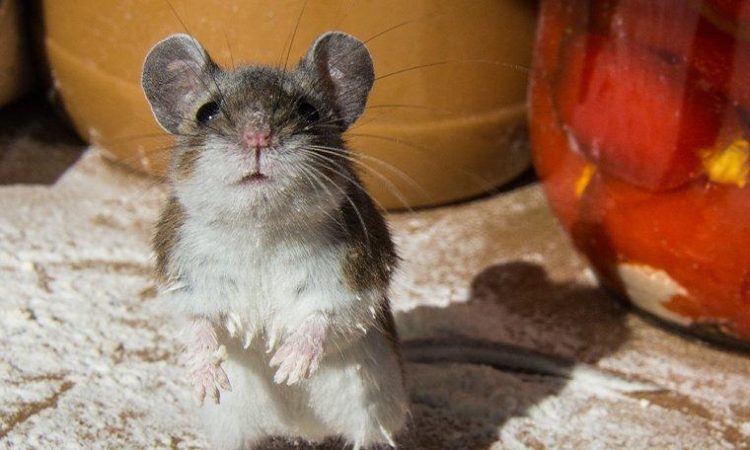
It’s a sound every homeowner dreads: scratching, rustling, or gnawing noises coming from the walls or ceiling. If you’ve heard these unsettling sounds in your Kansas City home during the colder months, you’re not alone—and you’re likely dealing with rodents.
Kansas City winters can be harsh, and when temperatures drop, rodents like mice and rats look for warmth, food, and shelter. Your home provides all three, which is why rodent infestations spike during the winter in this region. And once they’re inside the walls or attic, these pests can be much more than just a nuisance.
Here’s why Kansas City homes are particularly vulnerable to rodents in winter—and what you can do to keep them out.
Why Rodents Move Indoors in Winter
Rodents are survivors. When food becomes scarce and the outdoor environment turns cold and wet, they adapt by moving indoors. They’re especially drawn to:
- Warmth from central heating, appliances, or insulation
- Food sources like crumbs, pet food, and pantry items
- Shelter in wall voids, attics, basements, and garages
- Hidden nesting spots in insulation, storage boxes, or behind appliances
Kansas City’s seasonal climate—with freezing nights and unpredictable winter storms—drives rodents to seek consistent shelter, making homes throughout the area prime targets.
How Mice and Rats Enter Kansas City Homes
Rodents don’t need much of an opening to get inside. In fact:
- Mice can squeeze through holes the size of a dime
- Rats can fit through openings the size of a quarter
Here are some of the most common entry points:
- Gaps under doors or garage doors
- Cracks in the foundation
- Holes around utility pipes, vents, and HVAC lines
- Broken window screens or attic vents
- Open chimneys or roof edges
Once inside, rodents tend to travel along walls, baseboards, or in ceiling cavities where they can remain hidden but close to food and nesting materials.
Signs of Rodents in the Walls
Not all infestations are immediately obvious, but if rodents have made their way into your home, you’ll likely notice signs. Common indicators include:
- Scratching, scurrying, or gnawing sounds inside walls, ceilings, or under floors, especially at night
- Droppings (small, dark pellets) in cabinets, drawers, or along walls
- Gnaw marks on wood, plastic, wires, or food packaging
- Grease marks or smudges along walls and baseboards (from their oily fur)
- Unusual pet behavior, such as barking, staring at walls, or pawing at cabinets
- Foul or musty odors, especially from rodent nests or urine
If you hear noises but can’t find droppings, it’s still worth investigating—rodents can nest deep within walls and remain hidden for weeks.
Why It’s Important to Act Fast
Rodents aren’t just a nuisance—they can pose serious health and safety risks:
- Contamination: Rodents can carry diseases and bacteria, contaminating surfaces and food with urine and droppings.
- Property damage: Mice and rats chew constantly, and they can destroy insulation, drywall, and wood.
- Fire hazards: One of the most dangerous risks is when rodents chew through electrical wires, potentially causing house fires.
- Rapid breeding: A single pair of mice can produce dozens of offspring within a few months, turning a small problem into a major infestation.
The longer you wait, the more damage rodents can do—and the harder they are to remove.
How to Keep Rodents Out This Winter
1. Seal Entry Points
Inspect the exterior of your home thoroughly. Use steel wool, metal mesh, or caulk to seal holes and gaps. Don’t forget garage doors, attic vents, and utility penetrations.
2. Keep Food Sealed and Stored
Store dry goods in airtight containers and don’t leave pet food out overnight. Take out the trash regularly and wipe down surfaces to remove crumbs and spills.
3. Reduce Clutter
Rodents love cluttered storage areas for nesting. Keep garages, attics, and basements tidy. Use plastic bins instead of cardboard boxes.
4. Maintain Your Yard
Trim shrubs and trees away from your house, and keep firewood stored at least 20 feet from your foundation. Rodents often use vegetation and wood piles as cover to get inside.
5. Set Traps Early
If you suspect rodent activity, set traps along walls or near suspected entry points. Be cautious with poison—it can be dangerous for pets and doesn’t always solve the problem at the source.
6. Schedule a Professional Inspection
Rodents in walls or ceilings are extremely difficult to reach without the right tools and experience. A licensed pest control technician can inspect, treat, and seal entry points more effectively than DIY methods.
Don’t Let Rodents Spend the Winter in Your Home
Rodents may be small, but the problems they cause are anything but. If you’re hearing noises in the walls or seeing signs of activity, it’s important to act quickly before the infestation grows.
Kansas City homes are especially vulnerable to rodent problems in winter due to our seasonal weather and older home construction. Fortunately, with early detection and a solid pest-proofing strategy, you can keep your home safe, clean, and rodent-free all winter long. We recommend kansas city pest control.




